The Structure of the Trumpet
[Experiment] Gradually changing the length of the tube
Performing a sound experiment
Pressing the trumpet's valves increases the length of the path of the sound, making the note lower overall. Try out this mechanism using a vinyl tube.
Experiment to replace part of the tube and change the note
Experiment steps
- Attach a funnel to a PVC tube 130 cm long.
- Cut a second PVC tube 130 cm long in two places with a saw.
- Using a joint, make several sets of interchangeable parts that differ in length by 10 cm.
- Try blowing into 1.
- Join 2 and 3 together and try playing the assembly.
-
When tube is 130 cm
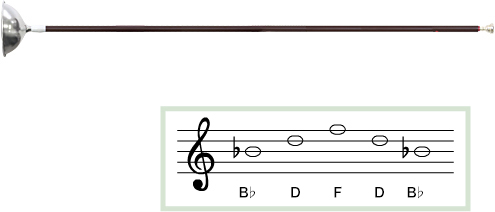
-
When tube is 150 cm
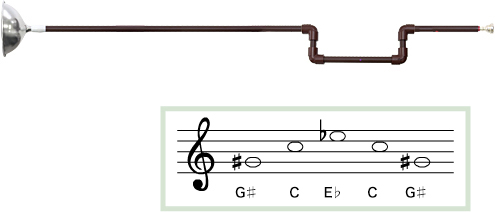
-
When tube is 160 cm
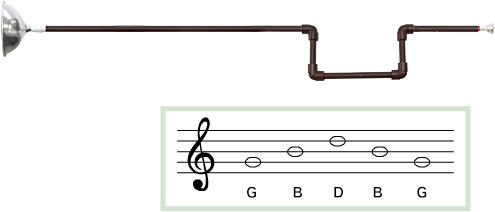
-
When tube is 170 cm
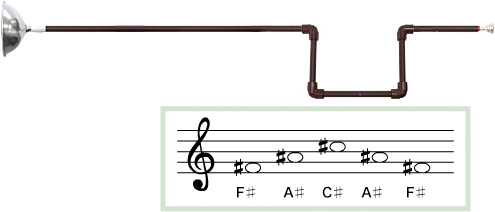
-
When tube is 180 cm
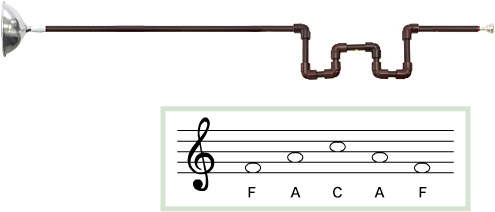
This is a recording of an experiment, so differs from a correct scale.
A few discrepancies aside, constructing interchangeable parts so as to increase the original length 10 cm at a time and playing each assembly in turn produced the notes above. Although the player did his best to follow the notes on the score, in practice the notes can be heard to waver too sharp or too flat. For example, the G# at 150 cm sounds more like an A. The notes are not that precise, although the degree of inaccuracy is hard to pin down.
What is important, however, is that-as can be heard-the note falls by more or less a semitone with every 10-cm extension. Finally, although the interchangeable part for 180 cm was made in an irregular shape, the note still fell by the correct interval. Thus, the length is clearly the determining factor. More parts appear to allow a greater variety of notes to be produced.
Musical Instrument Guide:Trumpet Contents
Structure
How the Instrument is Made
Choosing an Instrument
Care and Maintenance
Trivia
- Trumpeters in Bach's time alternated between instruments with a variety of ranges when performing
- The keyed trumpet-the fruit of the evolutionary process
- Famous trumpet works - Concertos, part 1
- Famous trumpet works - Concertos, part 2
- Famous trumpet works - Solos
- Is a Flugelhorn a horn? Or a trumpet?
- The highest note a trumpet can produce
- Aida trumpets for the "Grand March"
- The secret of the trumpet's traditional tone: small impurities!?
